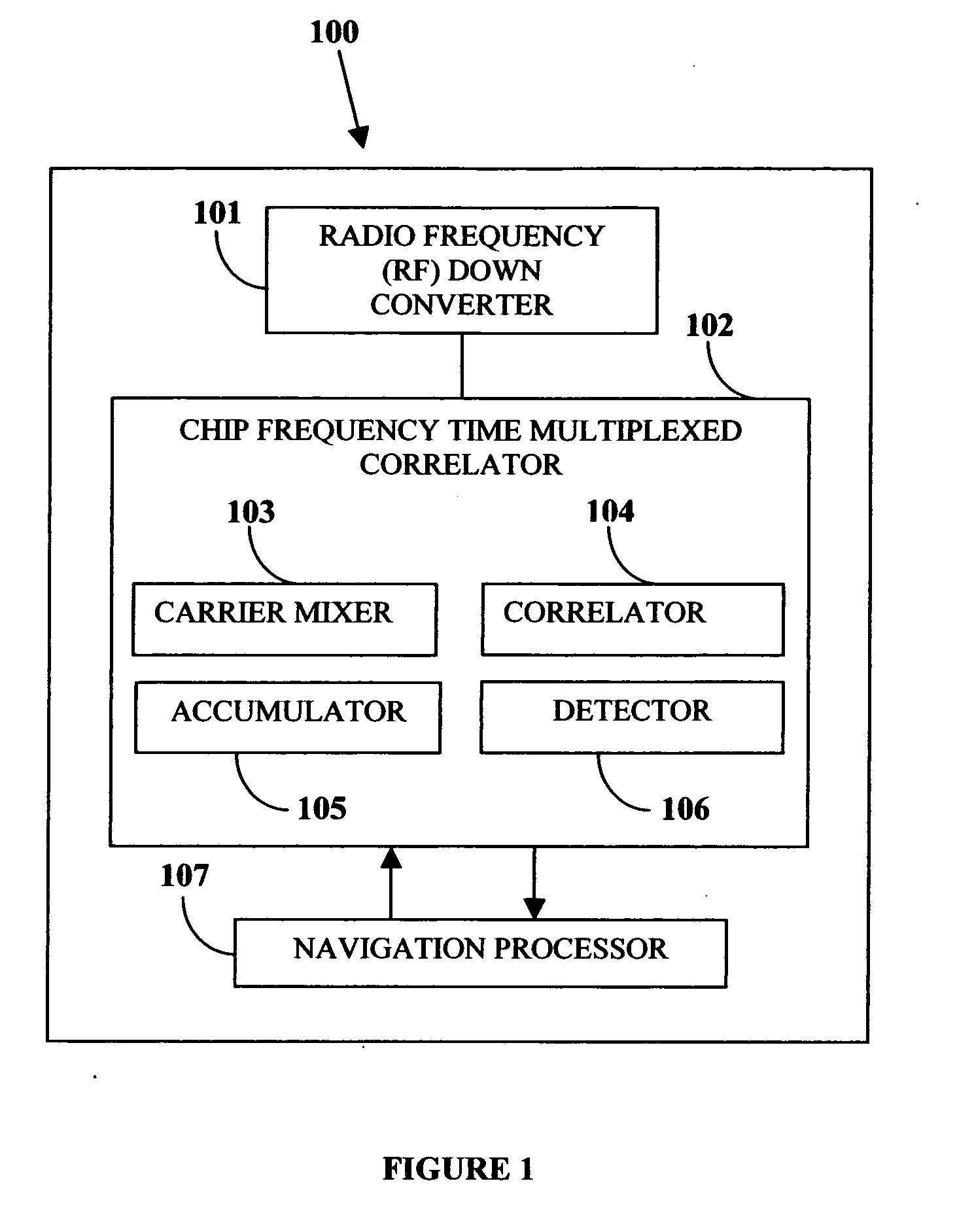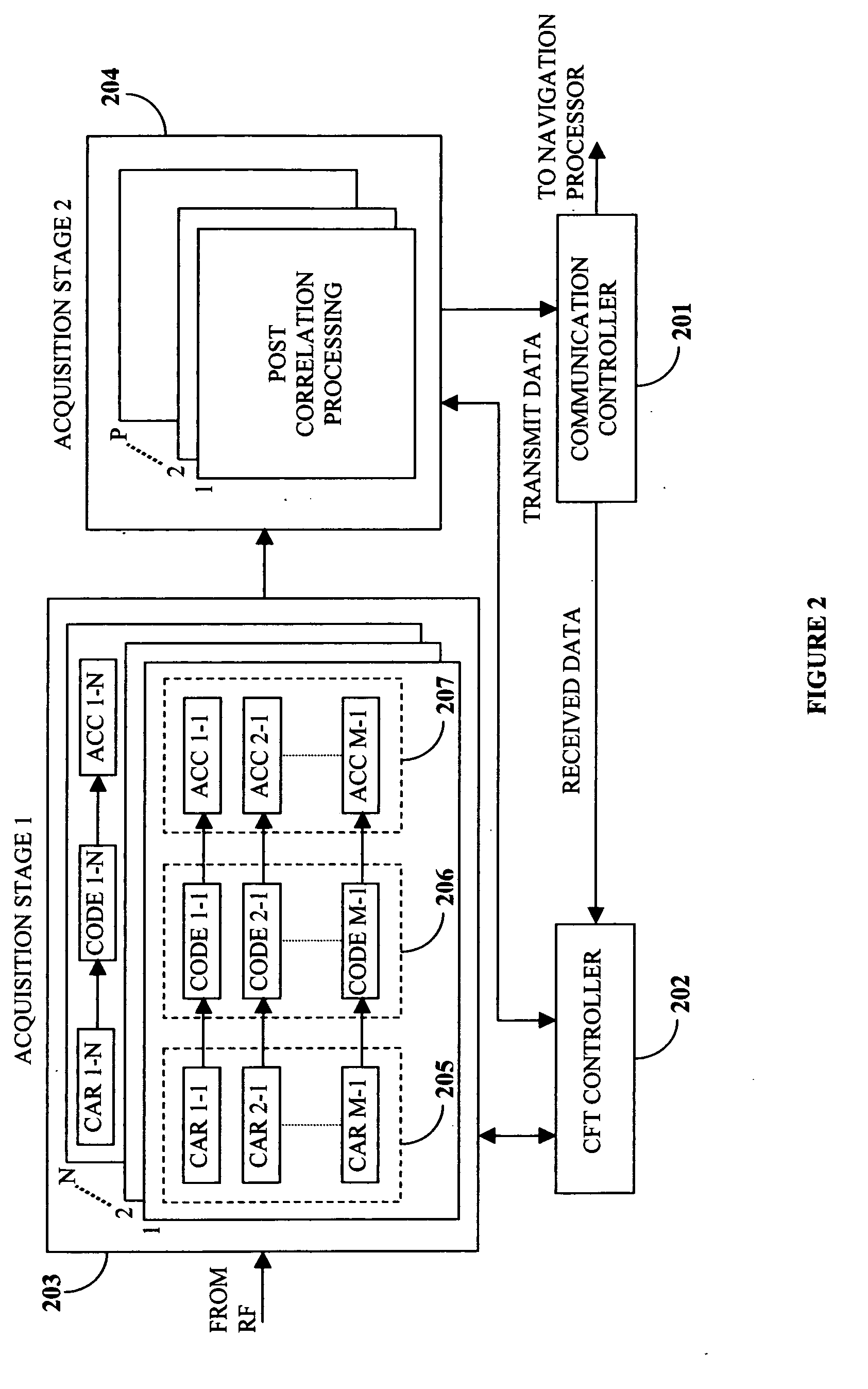Weak signal acquisition
a weak signal and receiver technology, applied in the field of pseudonym noise receivers, can solve problems such as loss of valuable data transmitted from satellites, and achieve the effect of increasing the efficiency of the receiver
- Summary
- Abstract
- Description
- Claims
- Application Information
AI Technical Summary
Benefits of technology
Problems solved by technology
Method used
Image
Examples
Embodiment Construction
[0021] The method disclosed herein presents a method of acquiring a weak satellite signal in the presence of a strong interfering satellite signal at a GPS receiver, using two techniques, namely the millisecond boundary correlation histogram method and the frequency response correlation histogram method. Both the techniques distinguish between the correlation characteristics of auto-correlation and cross-correlation peaks. A chip-frequency-time multiplexed (CFT) correlator applies the millisecond boundary correlation histogram and frequency response correlation histogram methods to distinguish the auto-correlation peak from the cross-correlation peaks.
[0022]FIG. 1 illustrates the block diagram of a PRN receiver, such as a GPS receiver. The GPS receiver 100 consists of a radio frequency (RF) down converter 101 that down converts the high frequency RF signal to an intermediate frequency (IF) signal, rejects the unwanted frequency bands, and provides sufficient signal amplification. T...
PUM
 Login to View More
Login to View More Abstract
Description
Claims
Application Information
 Login to View More
Login to View More - R&D
- Intellectual Property
- Life Sciences
- Materials
- Tech Scout
- Unparalleled Data Quality
- Higher Quality Content
- 60% Fewer Hallucinations
Browse by: Latest US Patents, China's latest patents, Technical Efficacy Thesaurus, Application Domain, Technology Topic, Popular Technical Reports.
© 2025 PatSnap. All rights reserved.Legal|Privacy policy|Modern Slavery Act Transparency Statement|Sitemap|About US| Contact US: help@patsnap.com



